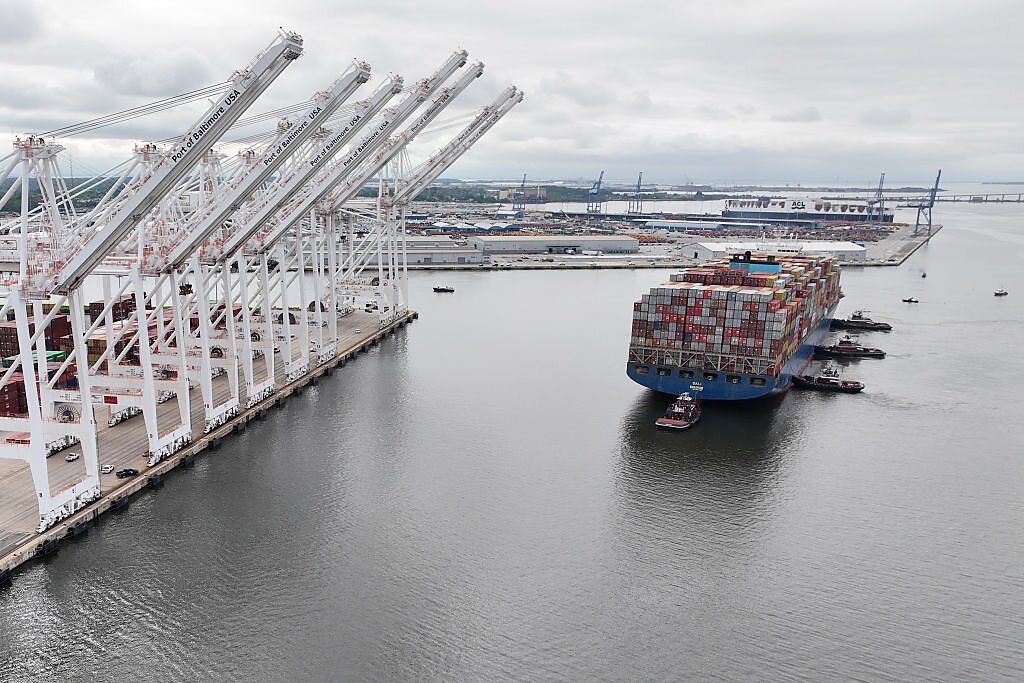On occasion, and increasingly of late, one encounters the argument that libertarians and other free trade/free market types suffer from a blindspot concerning national security. According to this strawman version of such advocates, trade liberalization is dogmatically pursued while an allegedly weakened US manufacturing sector—crucial to meeting the country’s defense needs—goes ignored or unaccounted for. When others call for deviating from free trade orthodoxy to ensure these vital capabilities are retained, libertarians struggle to offer a response.
Or so the thinking goes.
But such charges lack merit. Indeed, a cursory internet search shows that Cato scholars and many other free marketers have been weighing in on the intersection between US international economic policy and the defense industrial base, often at considerable length, for years.
A Clear-Eyed Look at the Defense Industrial Base—and Past US Protectionism
In 2021, for example, my colleague Scott Lincicome published a detailed analysis of claims that a policy consensus favoring unfettered markets (if only!) has undermined American manufacturing with deleterious consequences for national security. As he documented—as did I in a 2023 essay—notions that US industry has atrophied under a regime of vigorous trade liberalization do not comport with the facts. Properly measured both in terms of value‐added and output, the sector remains robust.
That’s true not only of manufacturing broadly but also of defense-related industries in particular. Indeed, a 2023 Department of Defense report found that “Americans have every reason to be confident about the future of defense supply chains.” US industry, the report added, “still leads the world in innovation and production.”
The premise behind proposed new government interventions to shore up domestic manufacturing on national security grounds is—broadly speaking—very much in question, if not outright debunked.
But what of industries vital to meeting defense needs that are in an inadequate state—do these demand a slew of new protectionist and industrial policy measures? Not necessarily, and for two simple reasons: first, as Lincicome documented in 2021, the United States already has laws on the books that can boost specific defense-related products or companies. For example, the Defense Production Act of 1950 allows the Pentagon to support domestic industrial base capabilities deemed “essential” through purchases or loans and loan guarantees. Additionally, the Defense Department can use the National Defense Stockpile Transaction Fund and Strategic and Critical Materials Stock Piling Act to ensure the availability of “strategic and critical materials.”
Second, and more importantly, security-related protectionism often doesn’t work very well.
The steel industry offers a case in point. Commonly presented as the consummate example of a strategic industry, the sector was the beneficiary of 25 percent tariffs imposed by the Trump administration in 2017 on ostensible national security grounds. If meant to spark its revitalization, however, the tariffs have failed. Rather than produce a turnaround, raw steel production sank to a lower point last year than when the tariffs were imposed.
What the tariffs have done, meanwhile, is harm other industries—including others widely viewed as important for national security (e.g. autos, shipbuilding)—that rely on steel as a key input. In other words, if strengthening the defense industrial base was one of the steel tariffs’ main goals, they almost certainly backfired.
Similarly, the protectionist Jones Act has proven a disastrous means of preserving the US commercial shipping and shipbuilding industries. While the law’s reservation of domestic water transport to US‐built and US‐flagged vessels theoretically ensures vibrant shipping and shipbuilding sectors to meet national security needs, its actual result has been a gross lack of maritime competitiveness. With little demand for the US maritime industry’s costly services, the number of oceangoing cargo ships compliant with the Jones Act has more than halved since 1980 while commercial shipbuilding output trails the likes of Croatia and Singapore.
High transportation costs produced by the law, meanwhile, inflict damage across the US economy—including to manufacturers.
Despite these sorry records, chances of either the steel tariffs or the Jones Act being repealed anytime soon are remote. Although objective failures, such measures retain political utility as a means of winning votes in the Rust Belt and coastal states.
This illustrates a key libertarian critique of protectionism and other forms of industrial policy: once imposed, such measures are difficult to eliminate even after proving unsuccessful or their need has passed. (Lincicome documents several other examples of this problem in his 2021 paper on US industrial policy.) Industries and businesses that benefit from such trade barriers exert pressure to maintain them while average Americans take little notice.
And so they remain.
Even merely cracking open the door to protectionist measures can lead to their abuse as political logic overwhelms economic sense. President Trump’s tariffs on steel and aluminum imports, for example, were claimed to be in service of national security objectives despite the Secretary of Defense pointing out that military requirements amounted to just three percent of domestic steel production.
More recently, President Biden made an imaginative linkage between national security and his May 14 announcement of increased tariffs on various Chinese goods including electric vehicles, batteries, and solar cells.
With the bounds of national security constantly being stretched, Financial Times columnist Janan Ganesh’s recent prediction that “in the contest with China, a lot of industries will turn out to be ‘strategic’” is both understandable and likely to prove prescient.
Crass protectionist opportunism arises even amidst those government agencies charged with ensuring the country’s security. The Defense Department, for example, has become a plaything for protectionists, subject to restrictions mandating its purchase of decidedly non-strategic items such as silverware and running shoes from domestic sources. While such restrictions serve no obvious national security purpose—indeed, reducing service members’ ability to find appropriate footwear is hardly conducive to military readiness—they benefit narrow business interests championed by members of Congress.
But this is far from a comprehensive listing of protectionism’s national security downsides. In addition, other items such as trade’s role in mitigating geopolitical tensions and its provision of supply chain redundancies also demand consideration. Less trade means fewer options for securing critical supplies—essentially placing all of one’s eggs (or baby formula) in a single basket—and a smoother pathway to conflict.
To be clear, this doesn’t mean that protectionism is never appropriate. Even the likes of Milton Friedman stated that, on occasion, national security considerations “might justify the maintenance of otherwise uneconomical productive facilities.” But given the significant attendant downsides of such measures, a high bar to their use should be employed (unfortunately often not the case).
Actually, Free Marketers Do Have a Plan for the Defense Industrial Base
Furthermore, before protectionism is employed, the government should explore other policy options with a much better track record and far fewer downsides. Indeed, as free market advocates have long written, the best way to help US manufacturers and strengthen the US defense industrial base is usually the liberalization of trade barriers and the removal of government interference in market processes, rather than just more tariffs, localization mandates, and subsidies.
In this spirit, the following policy reforms are worthy of consideration:
- Deregulation. The National Association of Manufacturers estimates federal regulations to have imposed over $3 trillion in costs in 2022, including approximately $350 billion in costs to domestic manufacturers. Permitting and other regulatory barriers, meanwhile, have delayed or even scuttled major recent projects targeted for government support. It’s thus no surprise that even many industrial policy advocates view regulatory reform as essential.
- Expanding immigration. Another major hindrance is the restrictive immigration policy, which serves as a barrier to talent. While this is especially true of advanced manufacturing industries such as semiconductors, it also applies to a range of other industries. Speaking at a May 1, 2024 hearing, for example, Secretary of the Navy Carlos Del Toro called for paring back immigration restrictions to alleviate a shortage of skilled workers at US shipyards.
- Eliminating tariffs. Restrictions on imports of raw materials, capital goods, and equipment raise manufacturers’ costs. That’s no small thing, with these intermediate goods accounting for 43 percent of US imports. Other unilateral trade reforms, such as nixing “Buy America” restrictions and amending “trade remedies” (antidumping and countervailing duty) laws to consider consumer and security interests, should also be pursued.
- Trade Agreements. Free trade agreements offer US manufacturers (and other businesses) the opportunity to both obtain inputs at lower cost and expand their exports. To this end, the United States should rejoin the the Comprehensive and Progressive Agreement for Trans-Pacific Partnership (CPTPP), as well as resuscitate the moribund Transatlantic Trade and Investment Partnership trade deal with the European Union. Beyond their economic benefits, such agreements would also strengthen ties with key US allies in both the Asia-Pacific region and Europe.
- Tax reform. As Cato’s Adam Michel recently detailed, lowering the corporate tax rate and offering the immediate and full expensing of business investments are straightforward means of encouraging the expansion and relocation of industrial activities to the United States.
This is just a top-of-head list of time-tested reform proposals; there are surely others. Collectively, they dispel the myth that free marketers have no ideas for boosting US manufacturing and national security. We just don’t endorse bad ideas.
There’s also one other point that bears mentioning. With a population roughly a quarter that of China, the United States—even under an optimal policy regime—faces a difficult task in singlehandedly matching the defense industrial potential of its chief geopolitical rival. The picture improves, however, once US allies are incorporated into the picture.
To better leverage these capabilities and bolster economic linkages with its allies the United States should, in addition to pursuing the aforementioned trade agreements with the EU and CPTPP members, expand the National Technology and Industrial Base to include Japan, South Korea, and at least some NATO-member countries. Similarly, laws that restrict the US Navy’s ability to build and maintain its vessels overseas should be modified to harness the know-how and expertise of advanced shipyards in allied countries (to its credit the Biden administration has begun exploring the expanded use of foreign shipyards within current constraints, and some in Congress are looking to push the envelope even further).
Revising the Jones Act to allow the use of vessels constructed in allied shipyards, meanwhile, would be a sensible means of promoting the expansion and modernization of the US commercial shipping fleet. That would bring both economic benefits as well as increase the fleet’s ability to serve as a naval auxiliary.
Looking Forward
At a time of rising geopolitical tensions, it’s understandable that concerns and questions are being raised about the defense industrial base’s ability to meet the country’s security needs. However, it in no way follows that the soundest method of addressing vulnerabilities is through protectionism and other forms of industrial policy. This observation is not the product of blinkered ideology but a well-founded recognition of the numerous and significant downsides that accompany such an approach. The first moves for addressing gaps in US industrial capabilities lie in eliminating government interventions, not adding them.
If, after market-oriented tax, trade, immigration, and other reforms are enacted, vulnerabilities remain, then targeted government action may truly be needed. But starting with tariffs and subsidies puts the cart before the horse, at significant risk and cost.
The confluence of national security, trade policy, and US manufacturing is a topic that Cato scholars have long explored. Expect more commentary, including a paper on various ways trade liberalization can support the defense industrial base, in the months ahead.




